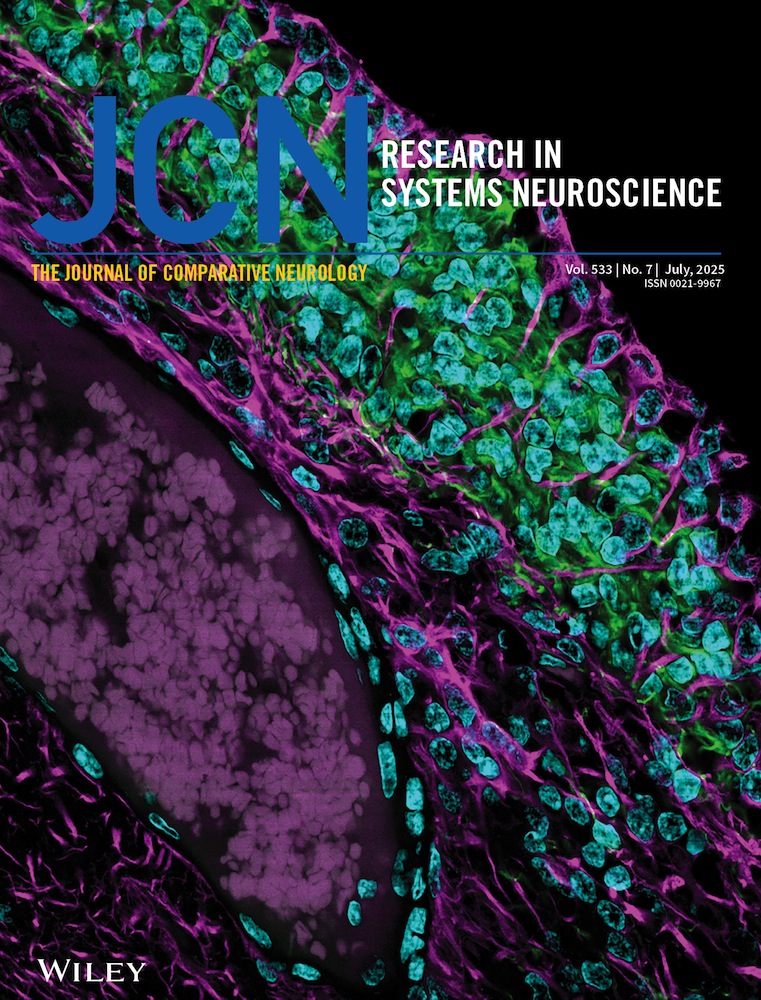Expression of the p150Glued component of the dynactin complex in developing and adult rat brain
Abstract
p150Glued is a component of the dynactin (Glued) complex that has been shown in vitro to be a required activator of cytoplasmic dyneinmediated transport of vesicles along microtubules and, thus, may be an essential component of retrograde axonal transport. In vivo, a dominant mutation in the Drosophila homologue of p150Glued induces aberrant neuronal development when heterozygous and is lethal when homozygous. In order to characterize the role of the dynactin complex in the development and function of vertebrate neurons, the distribution of the p150Glued message was examined via in situ hybridization to serial sections of adult rat brain and to a developmental series of sections. In the adult rat brain, the most intense hybridization observed with the p150Glued probe was in the pyramidal cells of the hippocampus proper, the dentate granule neurons, the cingulate and piriform cortices, the ventromedial hypothalamus, and the granular cell layer of the cerebellum. White-matter fiber tracts and the neuropil were generally devoid of signal. The data indicate that the mRNA encoding p150Glued is highly enriched in the cell bodies of neurons within the central nervous system. In developing rat, p150Glued is expressed at very high levels in neural tissue from the earliest time points assayed. Particularly intense hybridization was observed in the multiple layers of the retina, which is consistent with the phenotype of the Drosophila mutation. Therefore, the distributions observed via in situ hybridization are consistent with an essential role for p150Glued in retrograde axonal transport. © 1995 Wiley-Liss, Inc.




